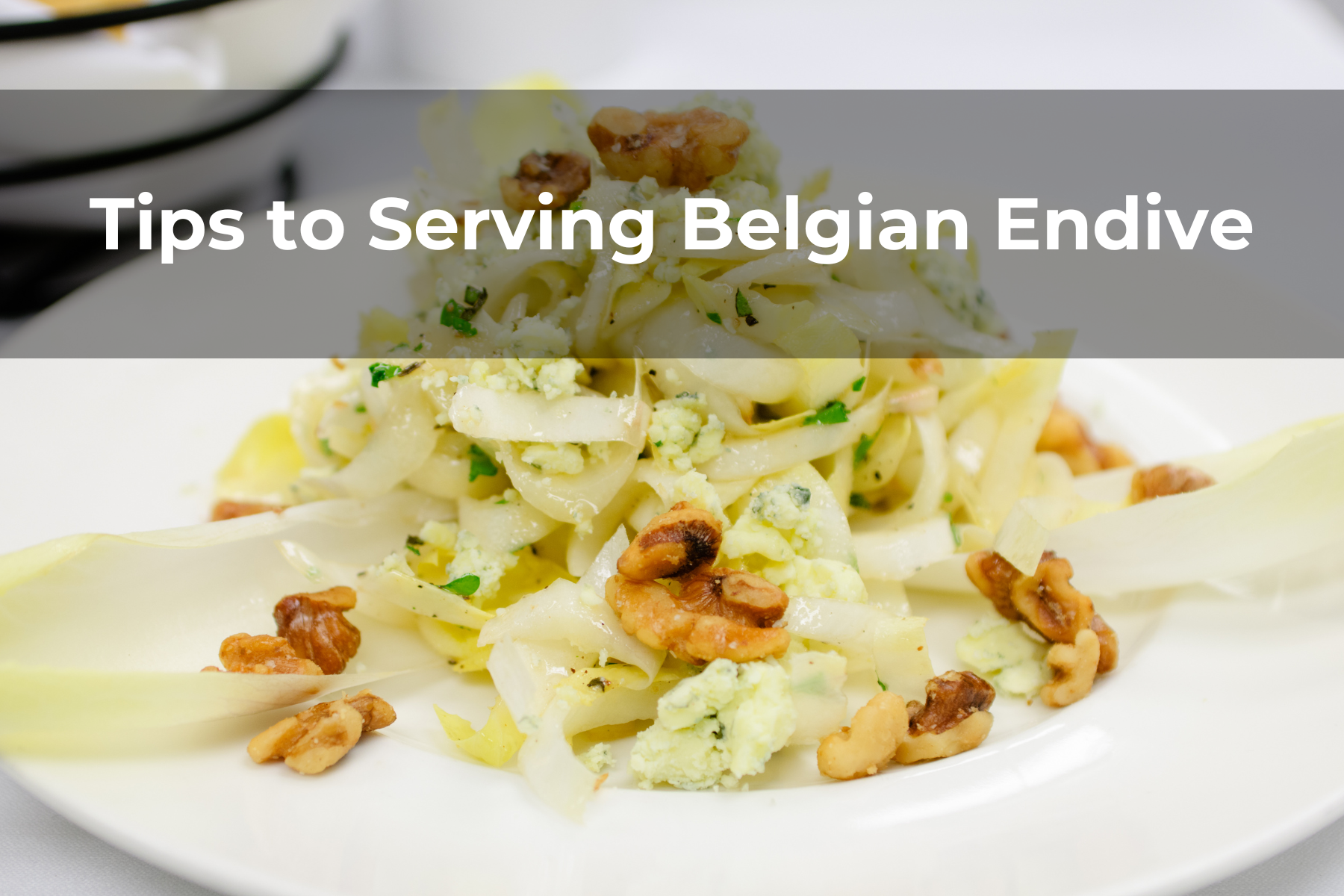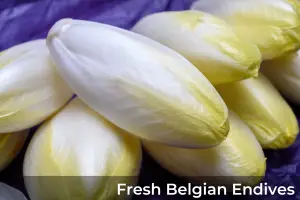Last Updated on April 11, 2024 by Real Men Sow
Serving Belgian endive raw, with winter salads or braised, and let me assure you, the meal will be worth it. Usually served with a white wine sauce, Belgian endive can be parboiled, steamed, or made into a gratin.
The tightly wrapped, creamy white Belgian endive leaves form a robust, spear-shaped heart. They are mildly pungent. The harvest season for Belgian endive runs from autumn to spring. Belgian endive can also be called French endive, chicory, and witloof chicory.
Choosing the Belgian Endive
Endive spears should be tightly sealed, smooth, shiny, and swollen. The leaf edges of the white endive will have a slight yellowish tint. The endive leaves will have a deep reddish colour. It is better to avoid endive spears that have become wilted or open at the leaf tips.
Storing
Wrap the endive in a damp towel and place it in a plastic bag in your refrigerator. It can maintain its freshness for up to five days.
Preparing Belgian Endive
Use a damp cloth to wipe off the ends of the spear before you cook or serve Belgian endive. The spear doesn’t have to be washed or soaked in water because this will make them taste bitter. Remove the outer leaves. Trim the base along the length of the stem and cut about 1 inch from the core-shaped cone. Then, quarter or half the heads.
Serving Suggestions
Serving Belgian Endive can be raw or cooked. You may also mix raw endive with salad greens and drizzle with vinaigrette. For a winter salad, combine raw endive with beets and pears, blue cheese, walnuts, blue cheese, orange or grapefruit quarters, and blue cheese. Balance the bitterness by adding something sweet.
Belgian Endive Cooking Suggestions:
Serve endive steam-cooked with bechamel sauce and butter, or season with herbs. Wrap each spear with parboiling endive, then cover it with ham and cheese sauce. Bake.
Broil white endive spears whole or in quarters with butter, chicken stock or veal broth, white wine, and a little sugar.
Steps to Steaming
- Steam whole or quartered.
- Put a little water in a saucepan, and then add a steamer basket. Submerge the steamer basket in the water.
- Bring the water to a boil over medium heat.
- Cover with the endive.
- Keep the steam on for between 4 and 5 minutes until you are ready to use it.
Steps to Parboil
- Use tongs to dip the whole endive in boiling water for approximately 30 seconds.
- Transfer the cooked items to cold water.
- Use a paper towel or a kitchen towel to dry the leaves.
Steps to Braise
- Boil whole or quartered.
- In a large skillet, heat olive oil or unsalted butter.
- Stir in the end, and cook on medium heat until it turns a light brown around the edges.
- Cover the skillet and let it simmer for about 30 minutes. Salt, pepper, and 1 cup of stock or white wine are all you need.
How Were Belgian Endives Grown?
Endive is not a natural gift but a partial human invention. White Belgian endive begins life as wild chicory. The wild chicory, which looks like a dandelion, begins its transformation into endive in autumn. Remove its green leaves, and the roots are replanted under dark conditions so that you may blanch the newly grown leaves. The new leaves become more compact and vertical as they grow.
Within a few weeks, the new growth will reach 4–8 inches (10–20 cm) in length and 2–5 cm (5 cm) in width. The white-leaved, mild-flavoured endives replace the dark green leaves and bitter taste of wild chicory.


